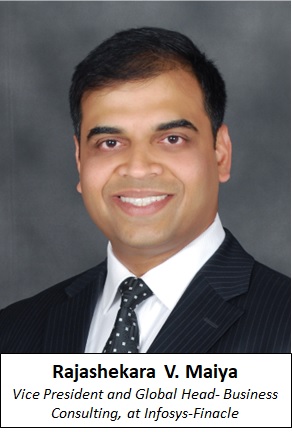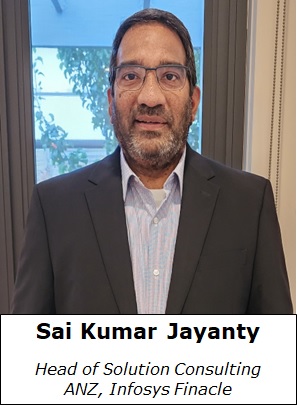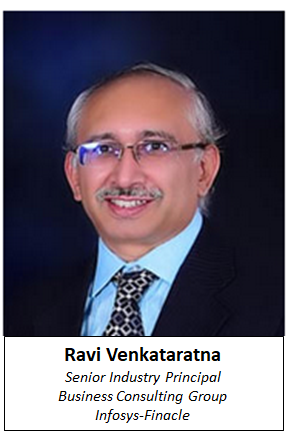The way money is spent, transferred, or exchanged has changed over the last few decades. The consumer movement from cash-based transactions to cashless transactions has been a distinct change across all countries. The payments sector plays a key role in the Australian economy. Today, a consumer can pay instantly for their purchase by tapping their mobile device or a card. Yet, there are several scenarios where the payment is not instant. It is imperative to continuously evolve the payments ecosystem, create an environment for leveraging the best practices, technology, and learnings from countries where payments ecosystem has excelled and benefitted its citizens at scale.
The journey so far…
Australians have come a long way when making a payment for their purchases or transferring money to someone. Cash payments accounted for 27 percent of the number of all consumer payments in 2019. This is a shift from being 70 percent in 2007. In 2021, less than 2 cheques were written per person in Australia, down from close to 50 in 1990.
On average, in 2021, non-cash payments worth around AUD 260 billion were made each business day, equivalent to around 12 percent of annual GDP. The Real-time payments that consumers and businesses can make and receive in Australia is the effect of what had been strategically set as objectives by Reserve Bank of Australia in 2012.
With payments landscape evolving rapidly, the regulator in Australia recommends licensing the payment service providers and vest the regulators with the power to designate new payment systems and services.
The game-changer…
The launch of NPP’s (New Payment Platform) PayID service in 2018 has been a landmark for Australia Payments System, enabling faster, flexible, and data-rich payments. PayID service provides the option for payments to the account owner’s registered mobile phone number, email address or Australian Business Number (ABN). NPP based real-time payments has touched about 2 million daily average (daily value is about AUD 1.97 billion), predominantly for low-value payments.
Buy Now Pay Later (BNPL) service, a concept revolving around embedded finance has exploded across Australia’s fintech scene at an unprecedented pace as open banking begins to take hold. By 2025, BNPL is predicted to represent 14% of the eCommerce transaction value in Australia. NPP’s latest innovation ‘PayTo’, to replace direct debit is aimed to make it easier for merchants and consumers to initiate real-time transactions from their bank accounts as well as enhance cross border payments to become faster and secure.
Also, with the emergence of a tokenised economy that offers potential to deliver new economic and social value, the Reserve Bank of Australia (RBA) has been exploring the relevance and role for a Central Bank Digital Currency (CBDC) in the context of its responsibilities for issuing the currency and overseeing the development of the payments system.
Where to from here…
As per PWC and Strategy analysis, the global cashless payment volumes by 2025 are set to increase from about 1tn transactions to almost 1.9tn, almost tripling between 2020 and 2030. The APAC region is expected to see the fastest growth in this trend, with an expected over 100% increase until 2025 and beyond.
India is leading the way outpacing developed nations in enabling real-time payments, with a hugely successful nationwide adoption. The initiatives under the India Stack over the past decade and the launch of UPI (Unified Payment Interface) in 2016 by the NPCI (National Payments Corporation of India) has marked a distinct phase in this digitalization journey, which enabled instant real-time payment transactions just based on a UPI handle, linked to the mobile number of the consumer. In the calendar year 2022, India’s UPI based real time payments exceeded 74 billion, with over 80% being made through non-bank entities such as PhonePe, Google Pay, Paytm & Amazon Pay.
While the payments industry in Australia has made significant progress with the NPP, there’s more to be done to realise the full potential of the NPP. According to ACI Worldwide report published in April’22, Australia recorded 970 million real-time transactions in 2021. The report projects the real-time payments transaction numbers to be 2.4 billion in 2026. This will not only give higher cost savings and economic output, but also improve the liquidity in the financial system, which becomes a catalyst for economic growth.
The Australian and Indian governments have recently made strides to deepen their bilateral relationship, in key areas such as trade and investment, defence and security, education and research, with new trade agreements, such as the Australia-India Comprehensive Strategic Partnership (CSP). The Australian government can leverage these new policies to enhance the efficiency and reach of NPP’s.
Building on the strong foundation of NPP in Australia, the industry, governing institutions and technology providers must envision to create an ‘Australia Stack’, on the lines of the proven India Stack, which includes four layers of Identity, Payments, Data and Open Networks. This can enable a presence-less, cash-less, paper-less and open infrastructure for payments. This vision can take small steps of execution such as:
- Making the TFN (Tax file number as a unique identifier) bio-metric based
- Enriching and enhancing ‘PayId’ to work at scale on similar lines to UPI handle
- Digitalizing the entire cycle of events associated with financial & banking engagement between consumers & service providers
- Extending Open Banking to unlock the potential of open API for real-time sharing and access to identity, data and payments at scale.
The outcome will encourage usage of PayIDs, reliability of NPP services, and enhanced cross-border payments to name a few.
Sources & References
https://worldpay.globalpaymentsreport.com/en
https://www.auspaynet.com.au/sites/default/files/2021-08/Fraud_Report_2021.pdf
https://www.rba.gov.au/payments-and-infrastructure/central-bank-digital-currency/pdf/australian-cbdc-pilot-for-digital-finance-innovation-white-paper.pdf
https://www.pwc.com/gx/en/industries/financial-services/publications/financial-services-in-2025/payments-in-2025.html
https://indiastack.org/index.html
https://investor.aciworldwide.com/news-releases/news-release-details/australia-and-new-zealand-look-new-era-real-time-payments-aci
About the Authors:
Rajashekara V. Maiya
Vice President and Global Head- Business Consulting, at Infosys-Finacle

Rajashekara Maiya is responsible for Business Consulting at Finacle, which includes Pre-sale, Solution Architecture, Account Mining, Digital offering. Previously he was responsible for charting the product strategy of Finacle, the flagship banking solution of Infosys. This role included responsibility for, defining the detailed product roadmap, Strategic acquisition & alliance partner identification & management, client engagement and representation of the company with external stakeholders such as analysts and media. He also was responsible for the Cloud Business for Finacle, including charting our strategies for Cloud Hosting, working with Cloud Infrastructure providers. Further, he was responsible for the Eco-system collaboration and bringing out point applications in the banking space and Fintech engagements. Maiya has been quoted in publications such as Forbes, The Banker, Banking Technology and the Economic Times. He is also visiting faculty to many universities, and speaks regularly at SIBOS, Asian Banker, MEED and others. He is on the expert panel of the McKinsey Quarterly, a member of the XBRL Abstract Modelling Task Force (AMTF) Group. He is also the co-author of book “SMACing the Bank” which was released in November, 2017.
Sai Kumar Jayanty
Head of Solution Consulting – ANZ, Infosys Finacle
Sai Kumar Jayanty (Sai) brings over 25 years of Banking & Technology experience and founding a technology start-up. His experience spans solution consulting, product management, and banker working with banks & financial institutions across multiple markets globally.
In his current role, as the Head of Solution Consulting for ANZ region, Sai is responsible for engaging banks & financial institutions on digital banking transformation programs and pursue multimillion dollar platform deals.
Ravi Venkataratna
Senior Industry Principal
Business Consulting Group – Infosys Finacle
Ravi Venkataratna has over 24 years of experience working primarily in the banking technology industry and has also worked with startups. He brings a techno-functional-commercial perspective and has helped build Infosys Finacle as a world class banking platform and has worked with global banks in adopting Finacle solutions in their technology modernization initiatives. In his current role, he leads a global team of Senior Solution and Enterprise Architects who work with several large and key client banks in their technology and digital transformation initiatives.